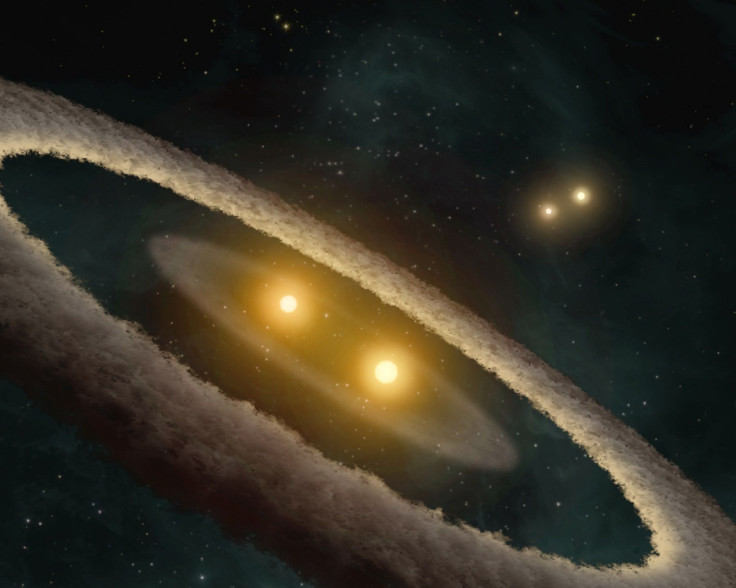Identical 'Twin Stars' May Help Retrace Milky Way's Family History, Study Finds

KEY POINTS
- Many stars are born from a single cloud of gas and dust
- The stars born together disperse throughout the galaxy over billions of years
- Researchers looked at the chemical compositions of binary stars in the Milky Way to greather depths than any previous study
- They found that the stars born together had identical "chemical DNA"
- Using this chemical map, astronomers can rewind the track of the stars from when they were born
Are the twin stars in the Milky Way fraternal or identical siblings?
A team of researchers had a closer look at their “chemical DNA ” and the results have implications that go beyond understanding binary stars.
Identical Twin Stars
Many stars are born from a single cloud of dust and gas, and over the course of billions of years, the stars that were born together get dispersed to different parts of the galaxy.
For a new study published in The Monthly Notices of the Royal Astronomical Society, a team of researchers from various institutions looked at 25 widely spaced binary stars identified by the Gaia satellite with the goal of studying their chemical compositions. Each of the binary they looked at has two stars that were born together from a single cloud of dust and gas billions of years ago, and the researchers wanted to see whether the twin stars are identical or fraternal.
Using the 2.7 meter Harlan J. Smith Telescope at McDonald Observatory, the team had a more in-depth look at the chemical composition of all 50 stars than any previous study, and they found that the stars that were born together were virtually identical.
Essentially, the stars that were born together from a single cloud of dust share a chemical DNA, and they are many times more identical than same-type stars that are simply randomly chosen.
Chemical Map
The team’s findings not only add information about the very nature of binary stars, but it could actually help astronomers understand Milky Way’s history and evolution as well.
This is because under the concept of “chemical tagging,” the stars’ chemical compositions can help determine which stars throughout the galaxy were actually born together even if they have already dispersed to different parts of the galaxy.
The result of the study serves as a proof-of-concept for chemical tagging, and with this “chemical map,” they can basically rewind the stars’ trajectories to track their beginnings from a single star-forming cloud.
This means that by knowing the chemical compositions of the stars, astronomers can know which stars were born together and they can then retrace the steps of how the Milky Way was assembled.
This not only helps astronomers to understand Milky Way but all the other galaxies as well.
The team is composed of researchers from the University of Texas, Austin, Princeton University, the University of California, Berkeley and the Carnegie Observatories.
© Copyright IBTimes 2025. All rights reserved.






















